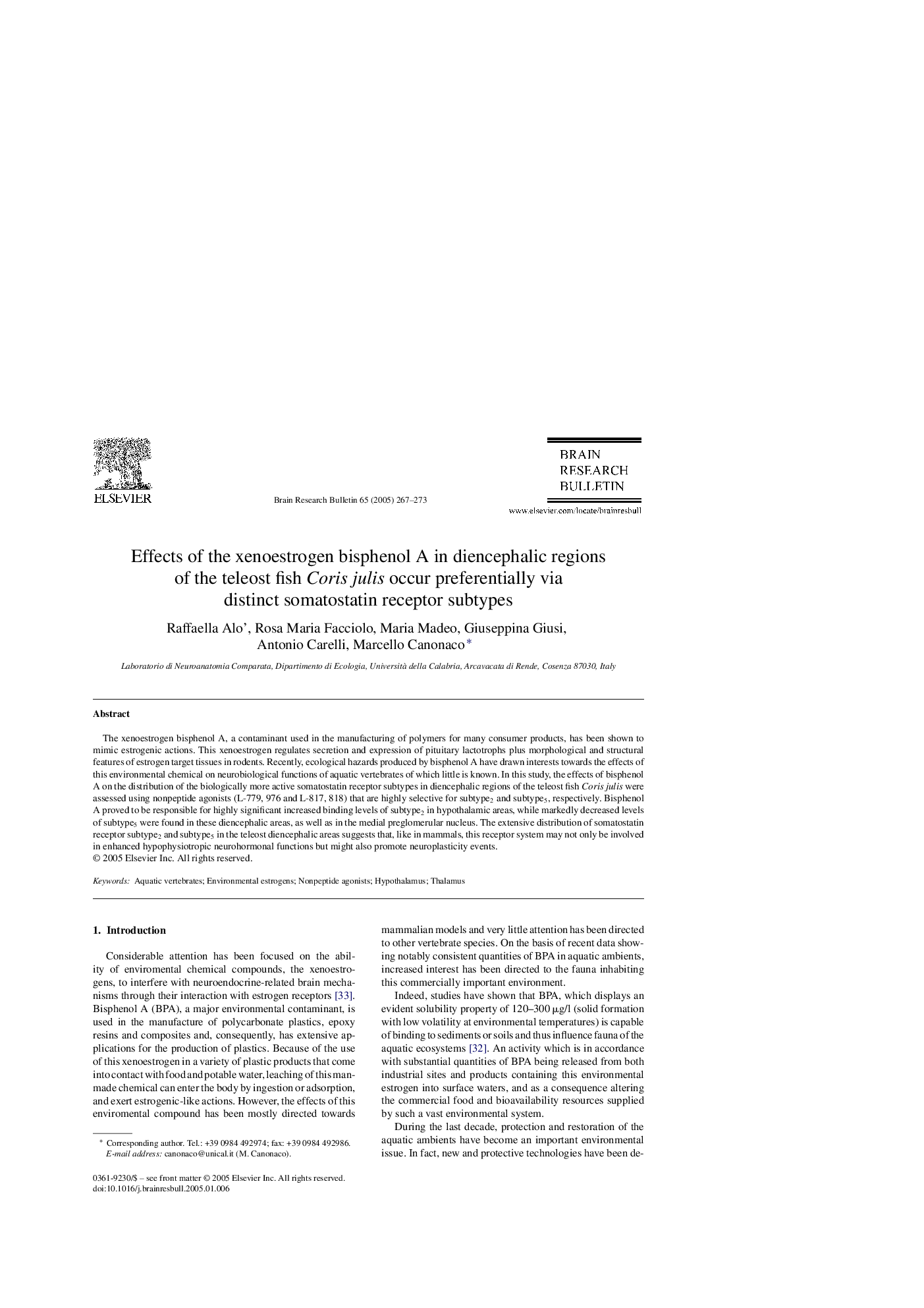| Article ID | Journal | Published Year | Pages | File Type |
|---|---|---|---|---|
| 9409479 | Brain Research Bulletin | 2005 | 7 Pages |
Abstract
The xenoestrogen bisphenol A, a contaminant used in the manufacturing of polymers for many consumer products, has been shown to mimic estrogenic actions. This xenoestrogen regulates secretion and expression of pituitary lactotrophs plus morphological and structural features of estrogen target tissues in rodents. Recently, ecological hazards produced by bisphenol A have drawn interests towards the effects of this environmental chemical on neurobiological functions of aquatic vertebrates of which little is known. In this study, the effects of bisphenol A on the distribution of the biologically more active somatostatin receptor subtypes in diencephalic regions of the teleost fish Coris julis were assessed using nonpeptide agonists (L-779, 976 and L-817, 818) that are highly selective for subtype2 and subtype5, respectively. Bisphenol A proved to be responsible for highly significant increased binding levels of subtype2 in hypothalamic areas, while markedly decreased levels of subtype5 were found in these diencephalic areas, as well as in the medial preglomerular nucleus. The extensive distribution of somatostatin receptor subtype2 and subtype5 in the teleost diencephalic areas suggests that, like in mammals, this receptor system may not only be involved in enhanced hypophysiotropic neurohormonal functions but might also promote neuroplasticity events.
Related Topics
Life Sciences
Neuroscience
Cellular and Molecular Neuroscience
Authors
Raffaella Alo', Rosa Maria Facciolo, Maria Madeo, Giuseppina Giusi, Antonio Carelli, Marcello Canonaco,
